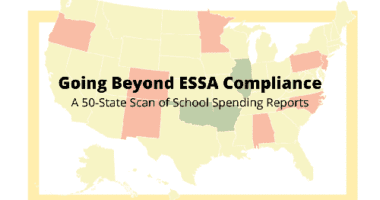Trends in State ESSA Plans: Defining Away Low Performance for Groups of Students
When is performance for a group of students so low that it requires attention and action? This is one of the critical questions that states have to answer as they implement the Every Student Succeeds Act (ESSA). The law requires states to identify any school that is consistently underperforming for one or more groups of children for targeted support and improvement. States, however, get to decide what “consistently underperforming” means.
This matters because how a state chooses to identify schools for targeted support communicates expectations. Identification criteria define the minimum level of performance that’s acceptable or high enough for a school not to require intervention.
Moreover, while the law leaves most decisions about supports and interventions up to states, it does require schools identified for targeted support and improvement to take certain steps — including putting together and implementing an evidence-based improvement plan with input from parents and the school community. If the school does not improve, its district has to take additional action. The state, too, has to examine its resource allocations to districts serving large numbers of schools identified for improvement. In other words, identification drives attention and support.
So how are states choosing to answer this critical question?
Among the 16 states and D.C. that have submitted ESSA plans to the U.S. Department of Education so far, many are setting expectations far too low. Many seem to be more concerned with identifying as few schools as possible than with making sure that any school that is underserving low-income students, students of color, students with disabilities, or English learners has to take steps to improve.
For example, some states are only identifying schools as consistently underperforming if they are performing as badly for a group of children as the absolutely lowest performing schools (the bottom 5 percent) in the state are doing for all kids. Schools that are doing only slightly better are considered just fine.
Even worse, some states are only identifying schools if their performance for a student group is in the bottom 5 percent or 10 percent of results for that group. This doesn’t just set very low expectations; it sets different expectations for each group of children. Under this definition of consistent underperformance, a school where only 20 percent of White students are on grade level could have to take action to improve, but a school where only 20 percent of Black students are on grade level could not.
One of the concerns we have heard from state leaders is that they do not have capacity to provide resources and support to a large number of schools. But here’s the thing: Many of the schools that continue to underserve certain groups of children already have substantial resources at their disposal — and face a far narrower set of challenges than the lowest performing schools in the state. While some of these schools may need additional support from the state, many do not.
Instead of letting these schools skate by on their average results, the state accountability system should prompt them — and their districts — to take a careful look at how they can use the resources they already have to improve outcomes for students they have underserved for far too long.










